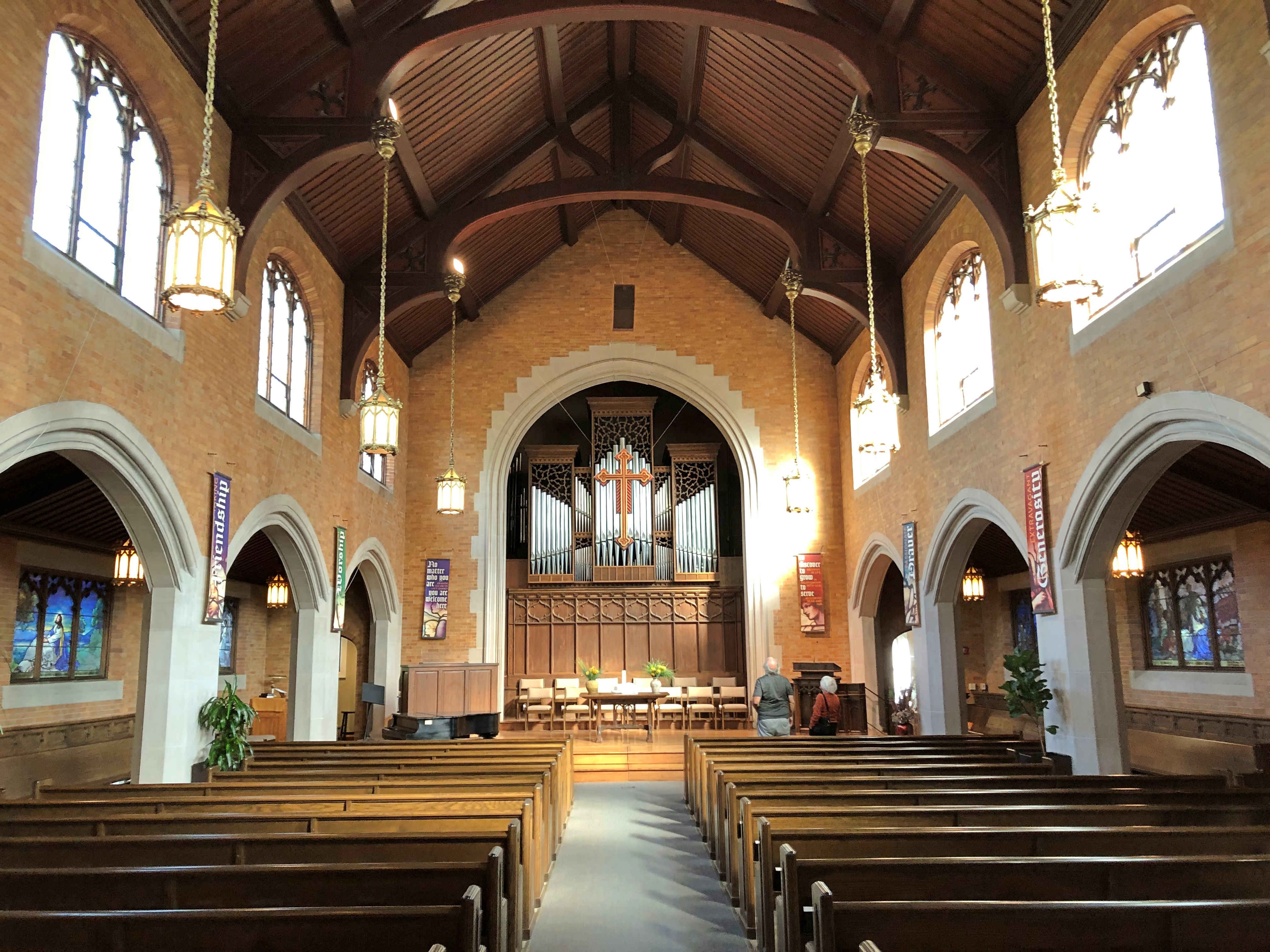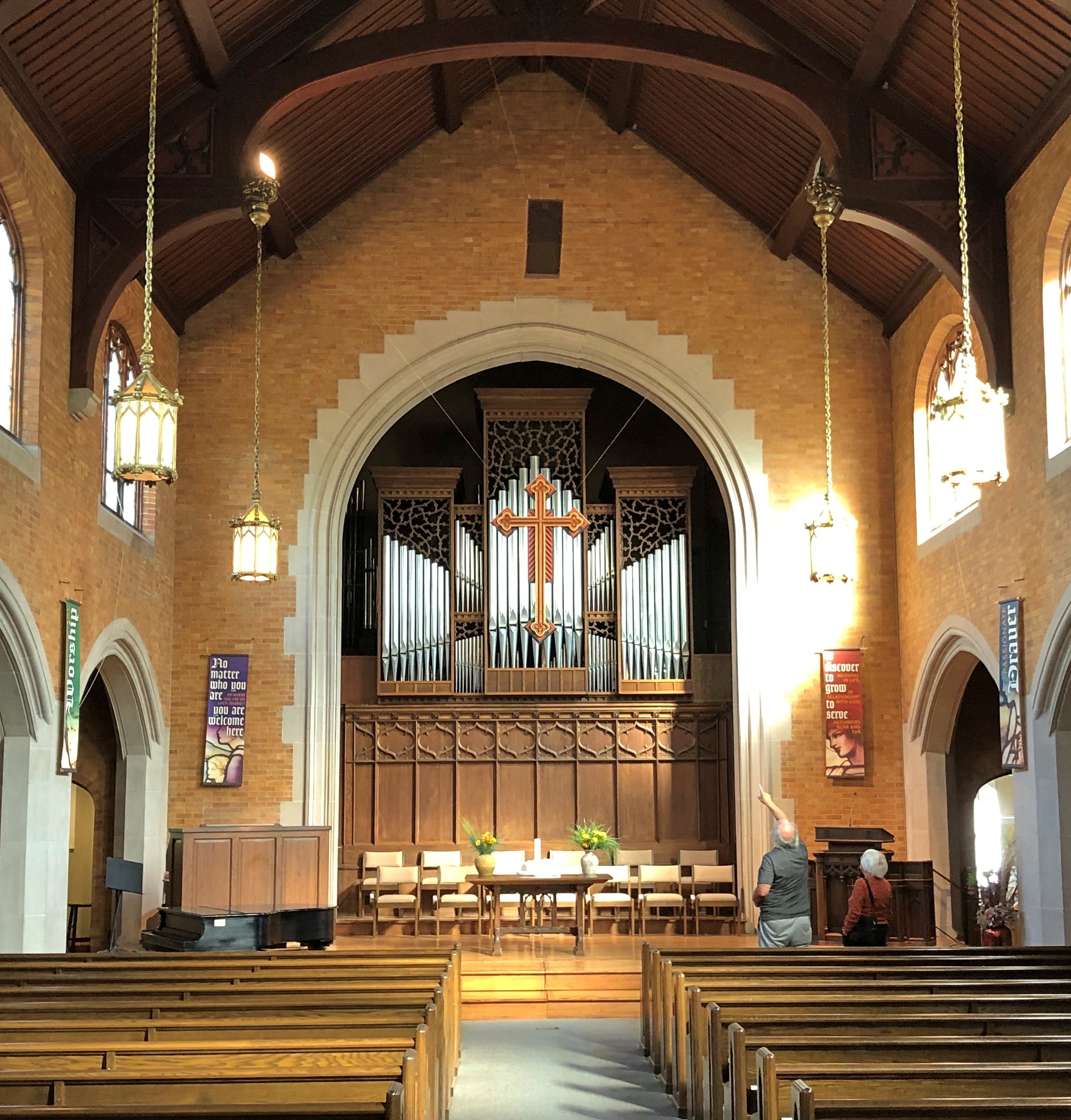Tucked away on a side street northeast of downtown Milwaukee, and not far from Lake Michigan to the east and the University of Wisconsin-Milwaukee to the west, is Plymouth Church. I arrived there on Saturday afternoon as the last place on my Doors Open visit.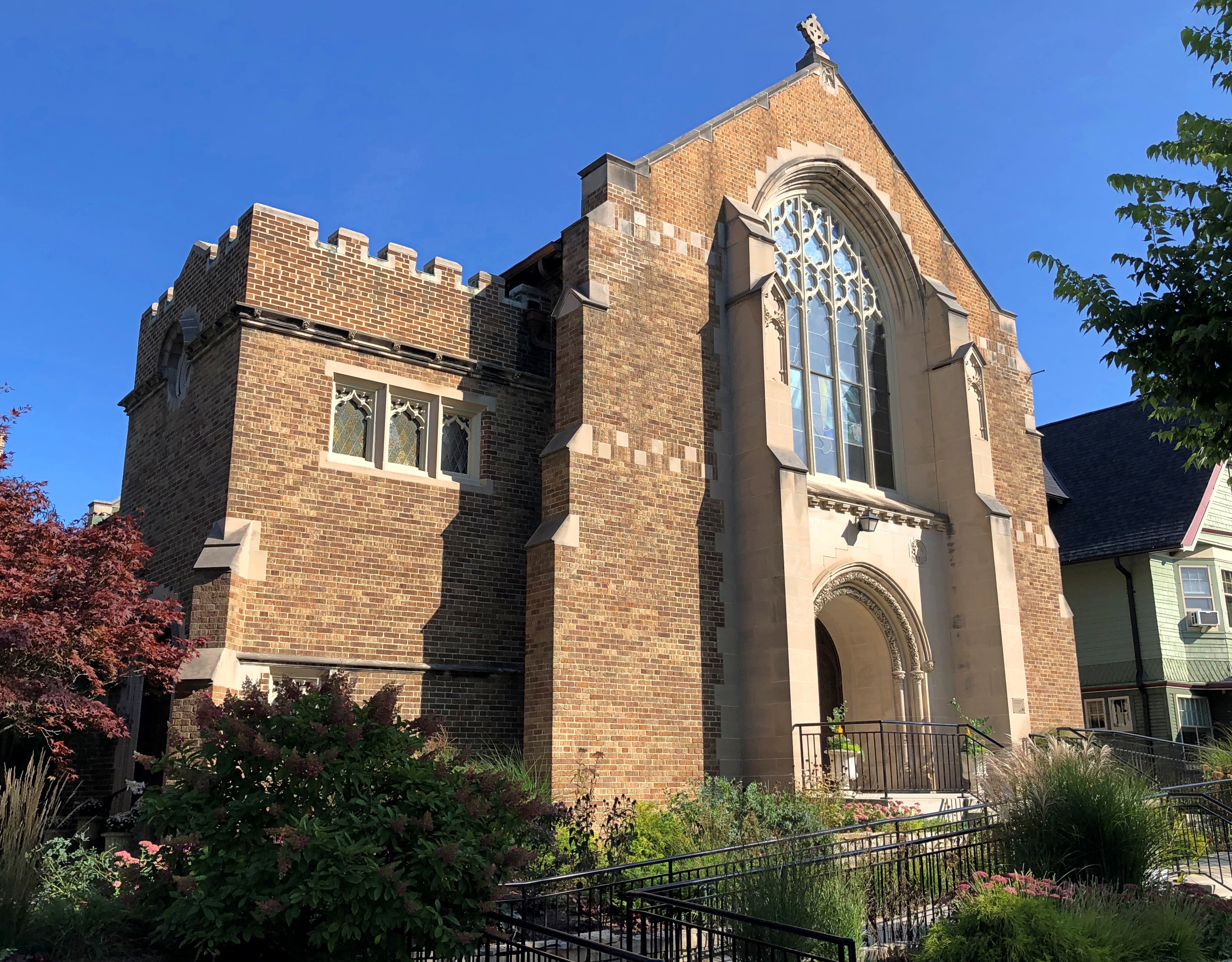
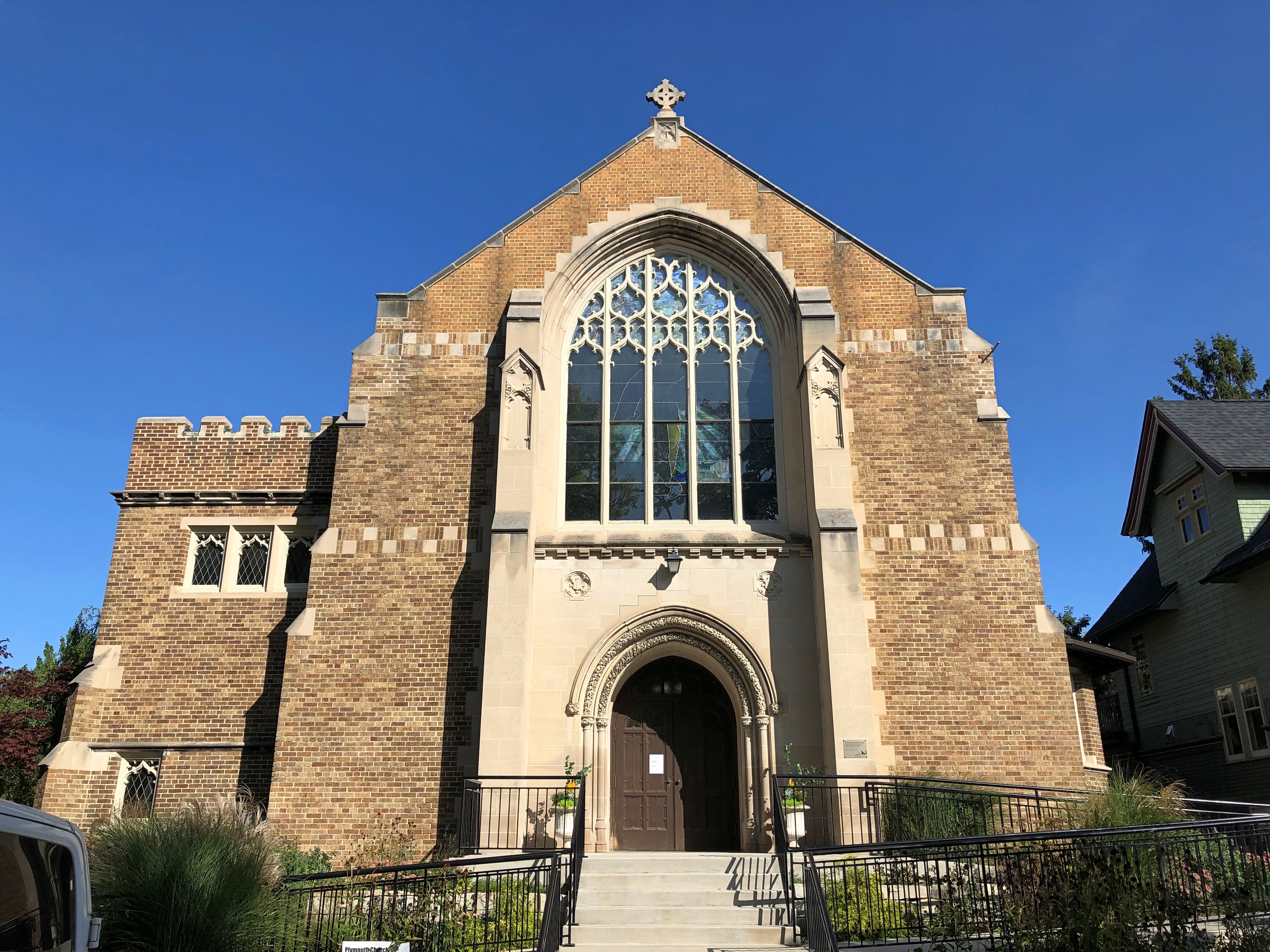
It is United Church of Christ, one of whose confessional predecessors were New England Congregationalists. Puritans and Separatists, if you go back far enough.
“Alexander Eschweiler, who designed many prominent houses and buildings throughout Milwaukee, served as the architect of the original building,” notes Historic Milwaukee. “His design harkened back to an older pastoral age, replicating the image of an old English church. The beautiful sanctuary is notable for its nine Tiffany windows.”
Maybe eight. A volunteer at the church entrance – a little old church lady (really) – told me that one of the windows was unsigned. It sure enough looks like a Tiffany, but without the lettering, you can only be 99.44% or some other high percentage sure of its pedigree.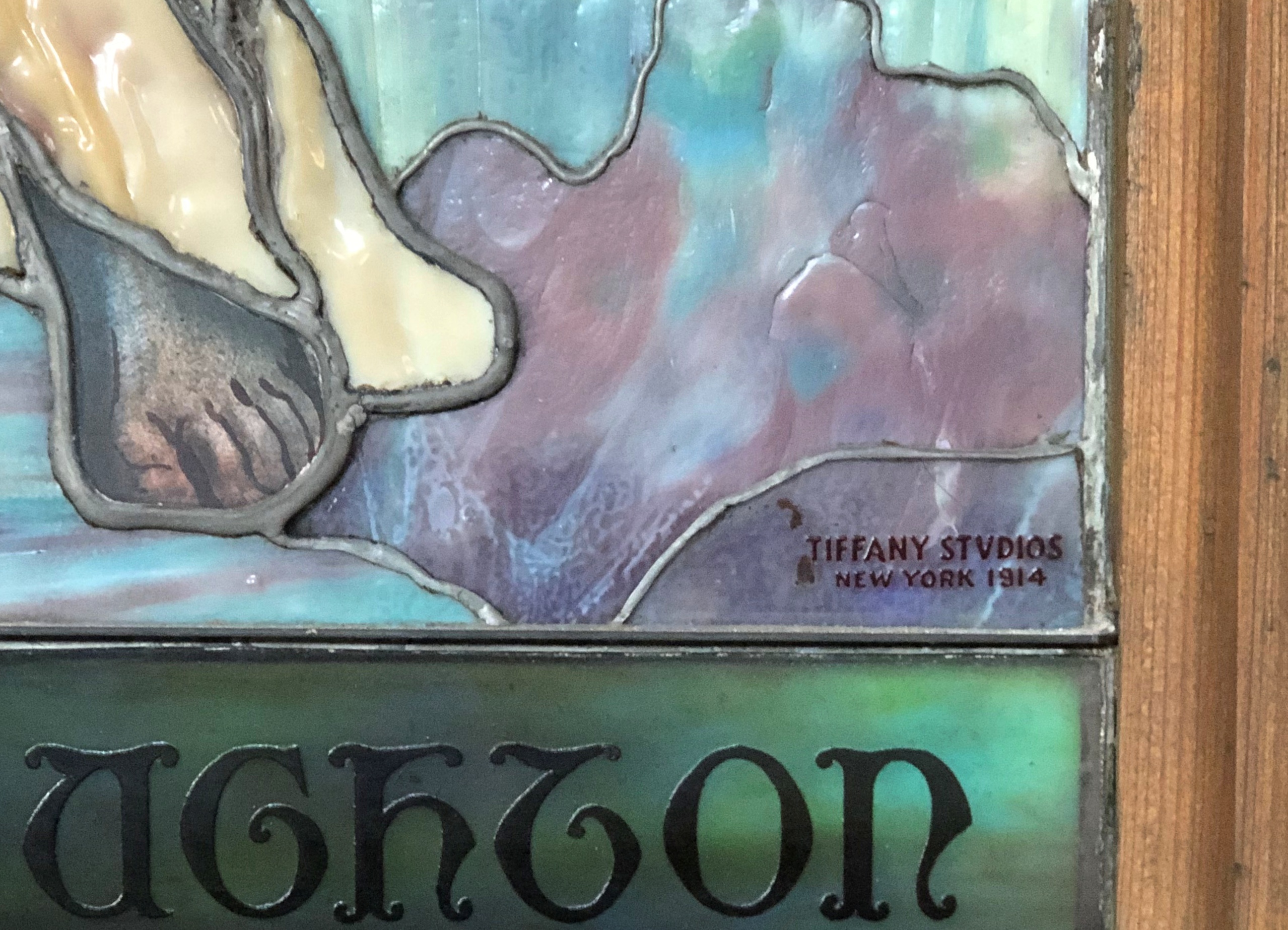
I spent a good while looking at the windows, dedicated more than a century ago to a number of early congregants.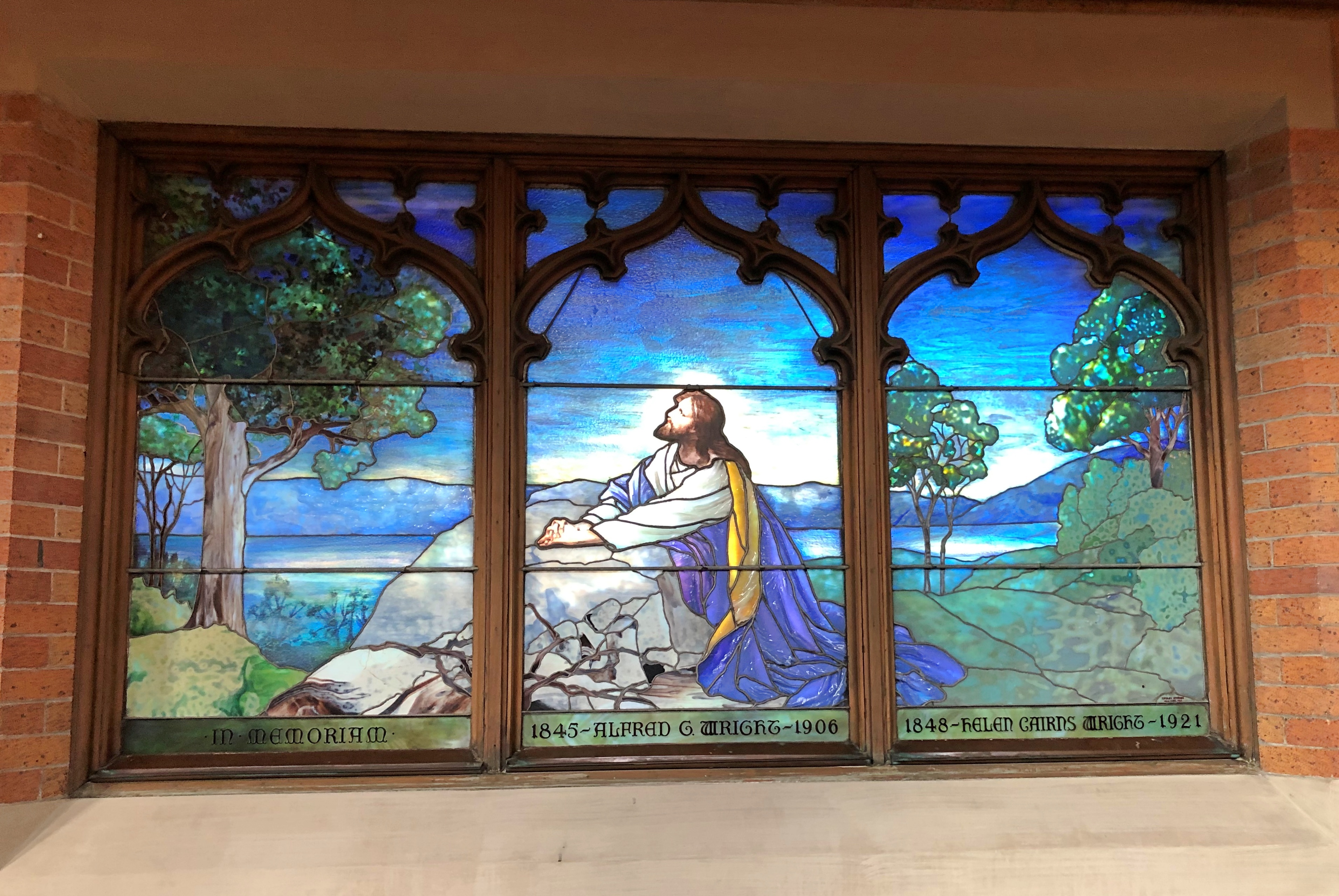
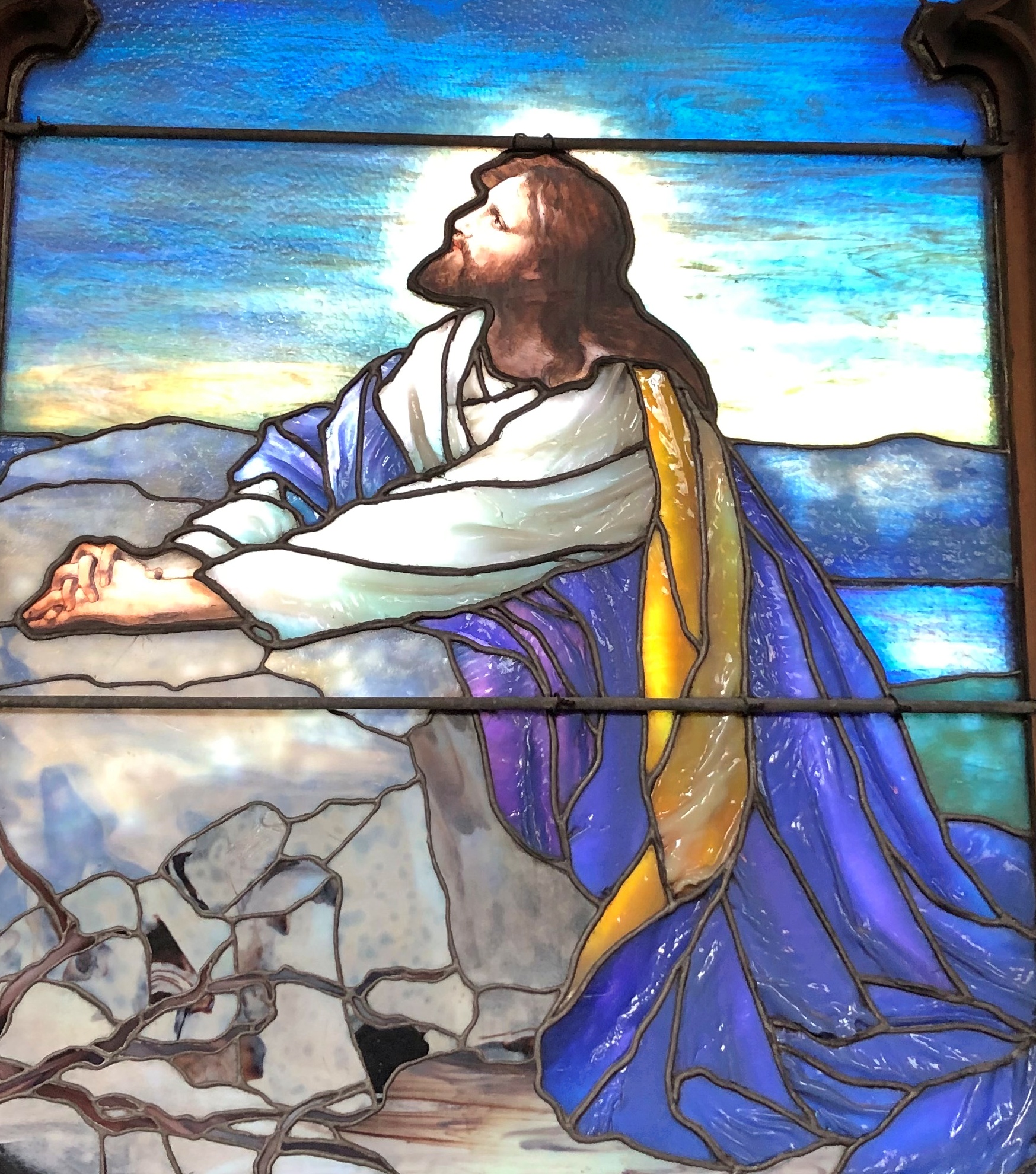
Long looks are highly recommended.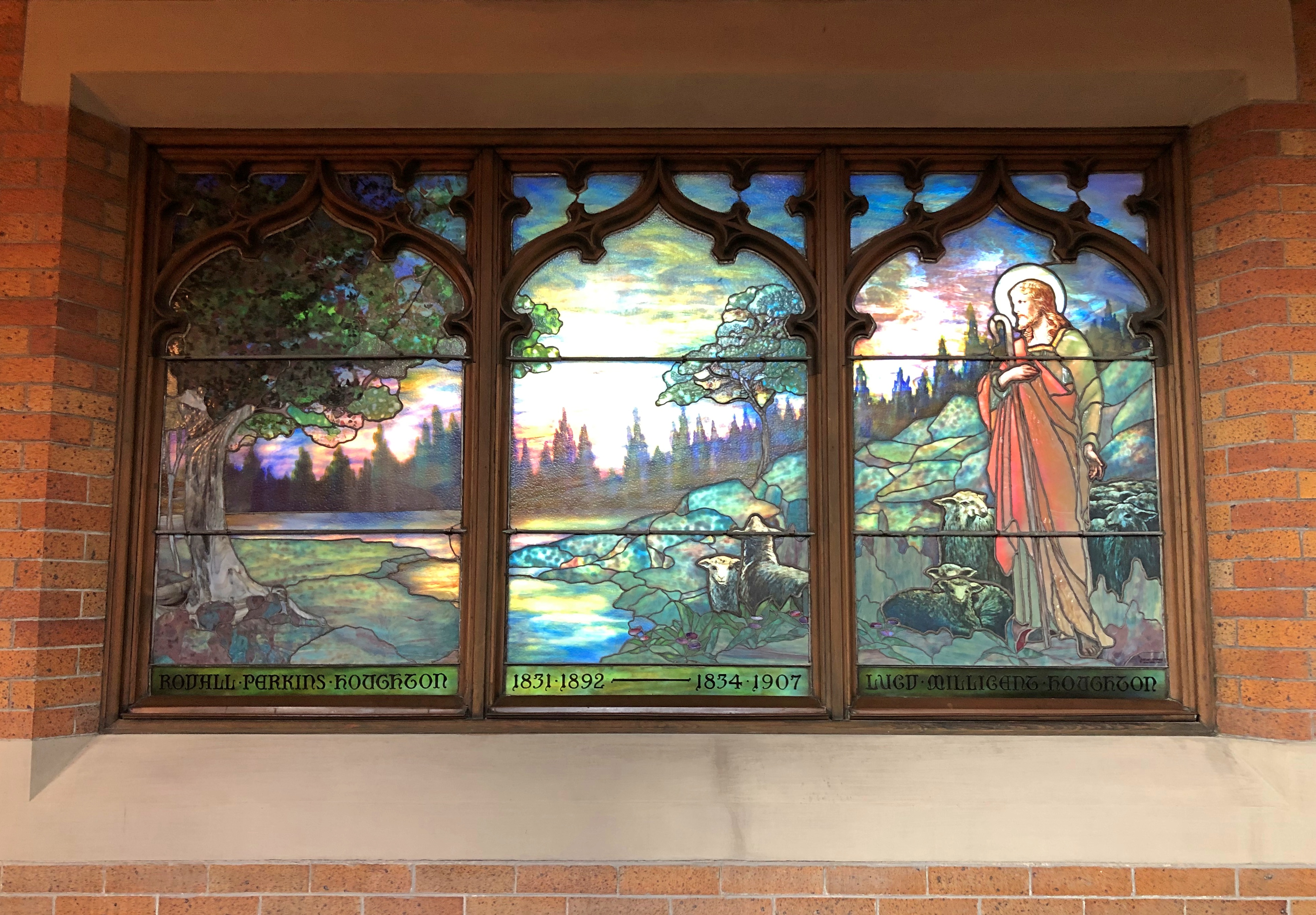
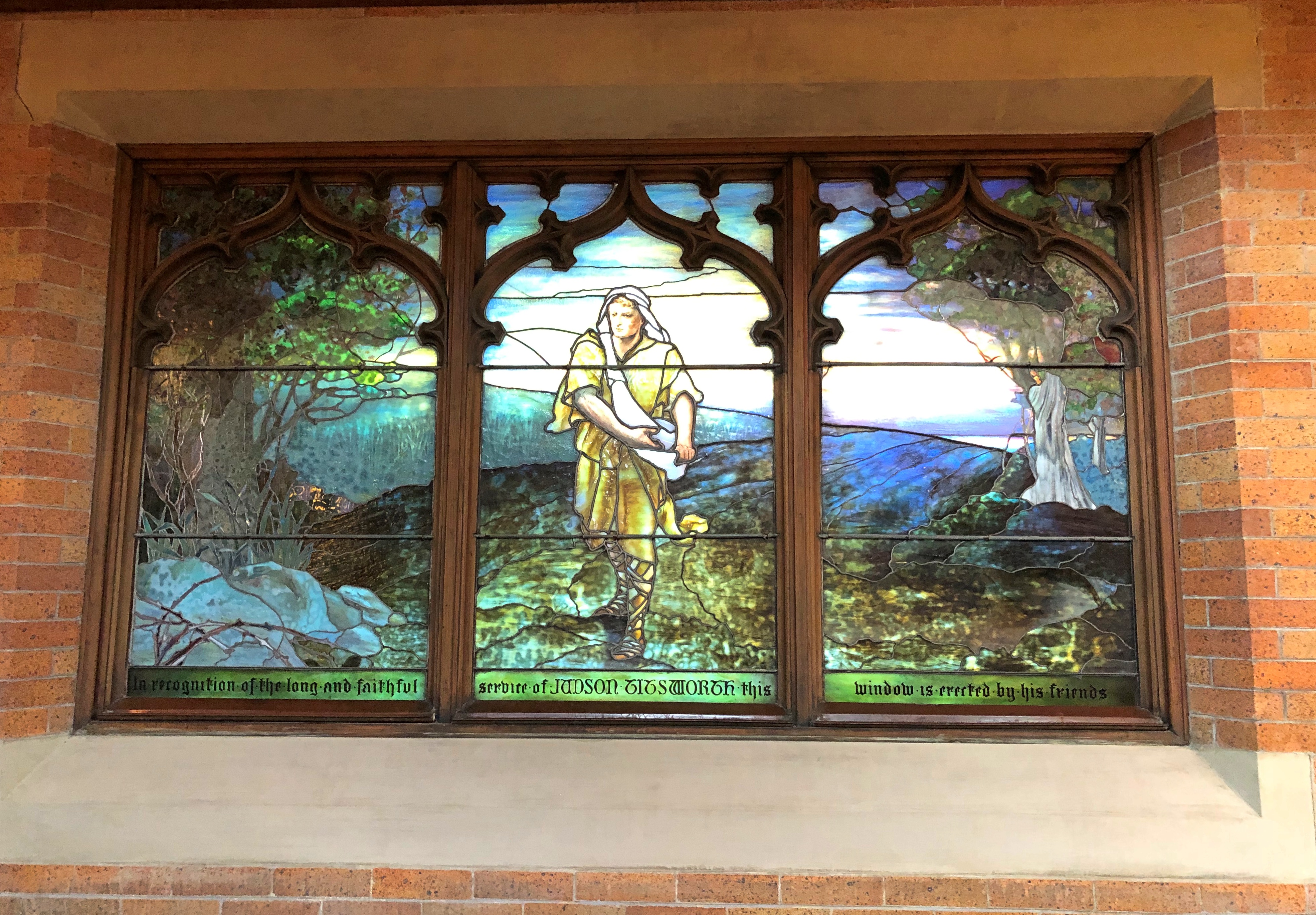
Toward the front entrance. At that moment, the afternoon sun obscured the church’s rose window, which rises over the choir balcony.
Obscured unless you got up close. Then it is a thing of wonder.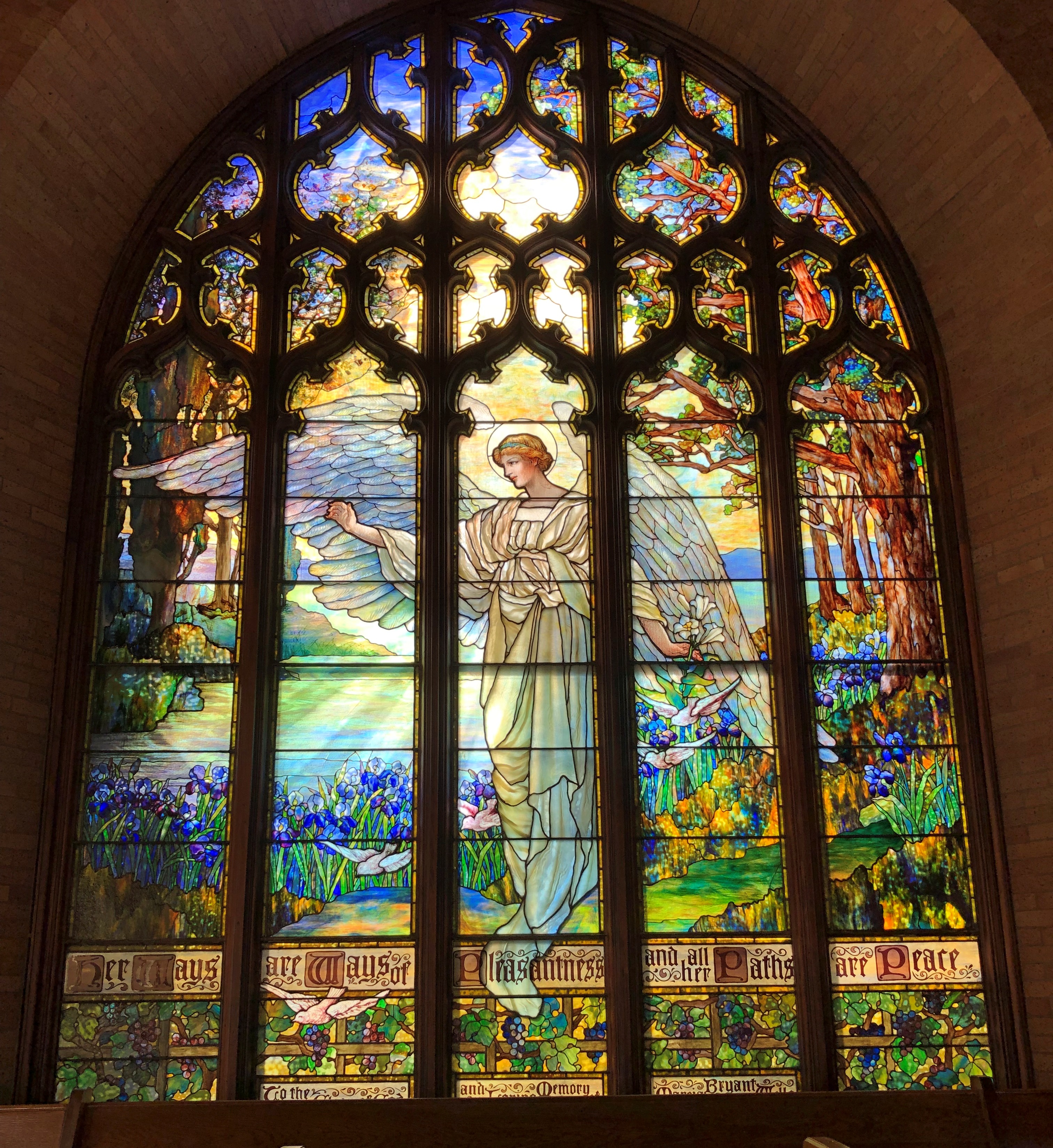
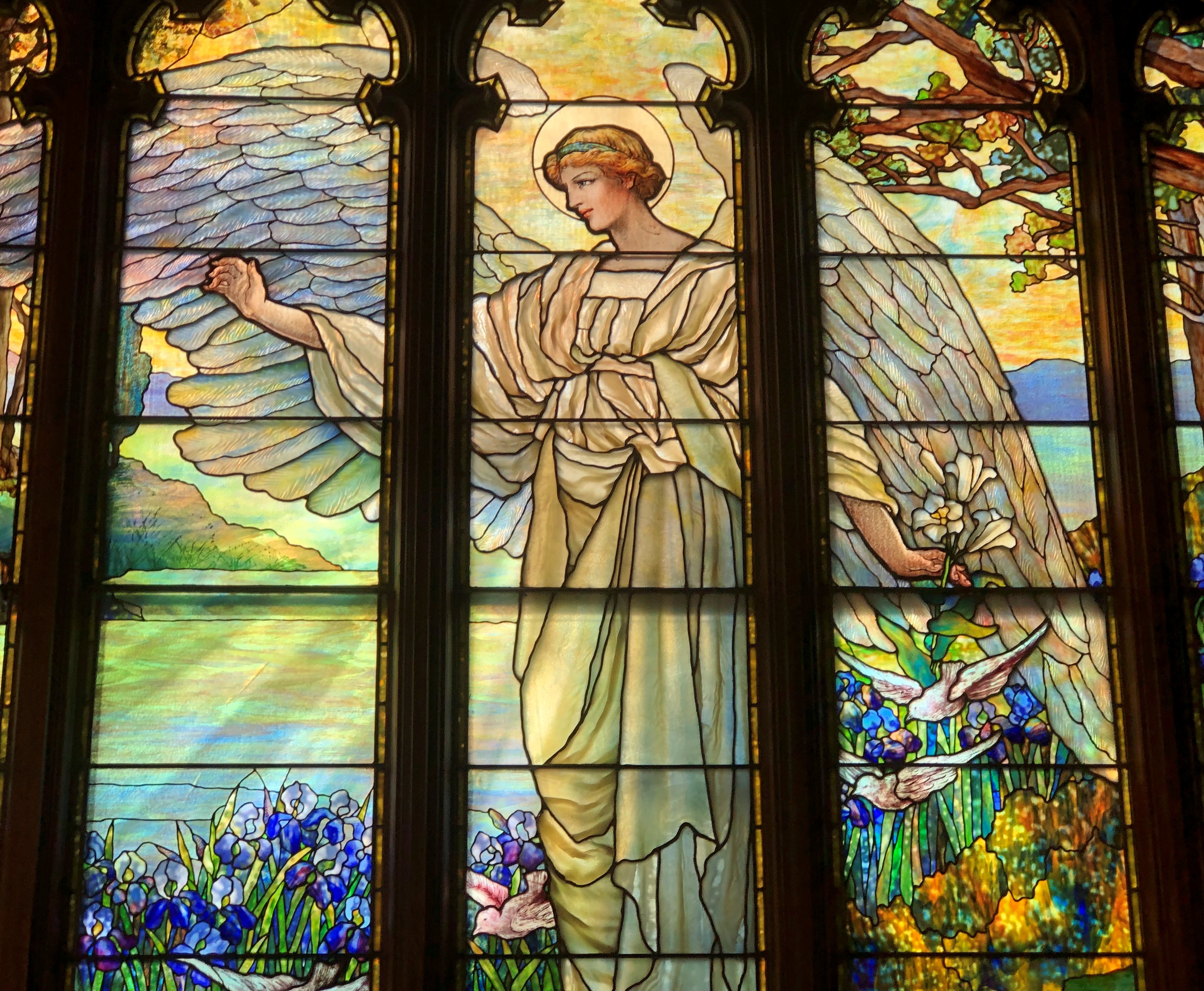
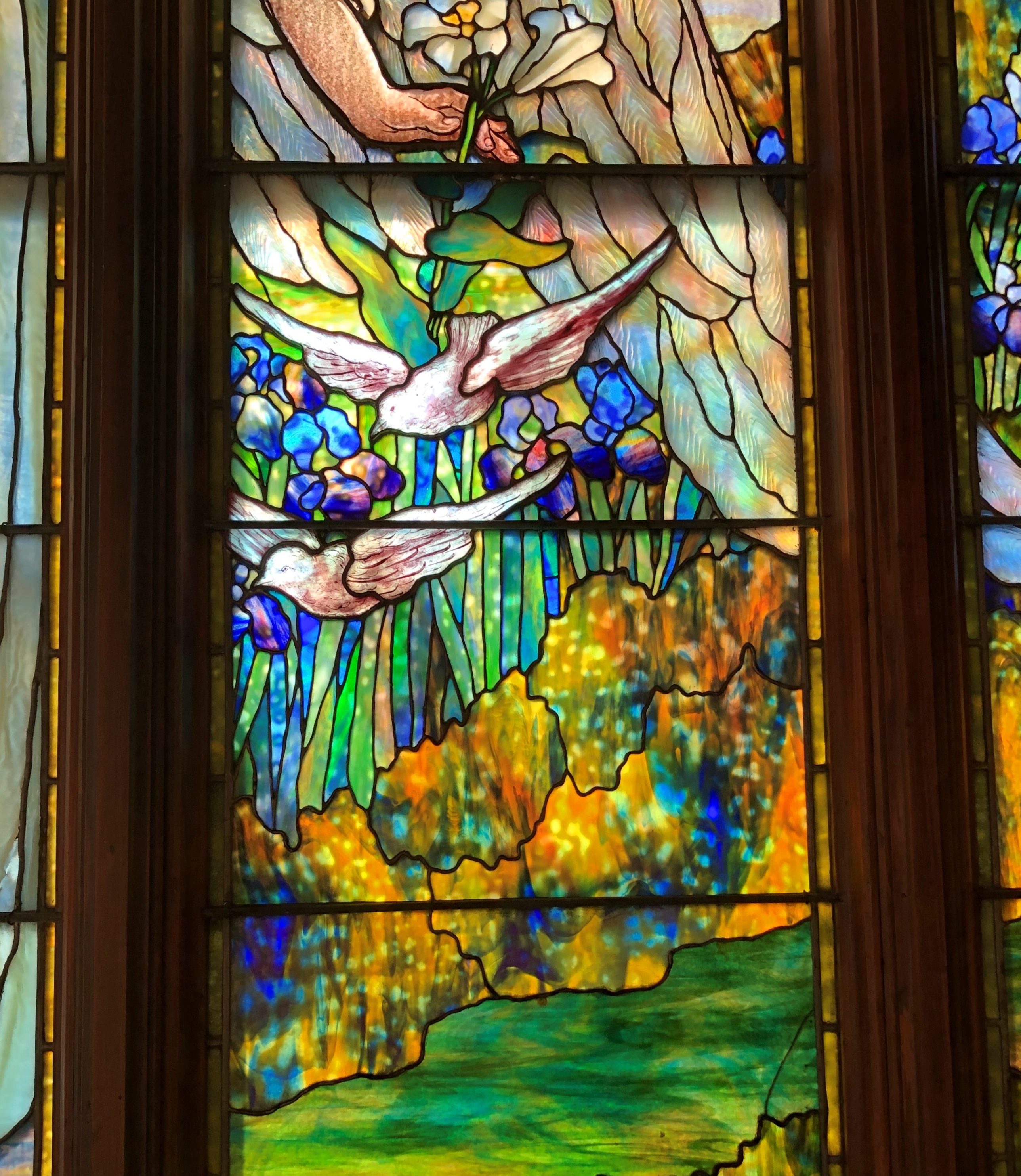
The window was installed in 1917. Let Bobby Tanzilo, writing in OnMilwaukee, take it from here: “ ‘The window, a large Tiffany art glass, was presented to the church by Mrs. C. W. Noyes in honor of her mother, Marcia Wells, wife of Daniel Wells, who built the Wells Building and for whom Wells Street was named,’ wrote the Sentinel in June 1917.
“The window represents an angel figure bestowing the benediction of peace. This is the seventh memorial window in Plymouth Church.”
1917. How many of the congregation prayed ardently for Peace that upheaval year? For the American men headed for war? For Victory? All in a single breath?
Tanzilo also discusses the artist who did the rose window, and quite possibly the other windows, while working for Tiffany: Clara Burd (d. 1933). That despite the fact that Tiffany didn’t name the artists that worked on its projects.
“Clara Burd was – along with others including Agnes Northrop who designed the 1917 Hartwell Memorial Window that’s at Art Institute of Chicago, Clara Driscoll and others – one of the so-called ‘Tiffany Girls,’ talented women responsible for designing stunning works of art in glass (not only windows, but also lamps and other objects),” Tanzilo wrote.
She did a lot else besides. Such as book illustrations. “The Returning Prodigal” (1911).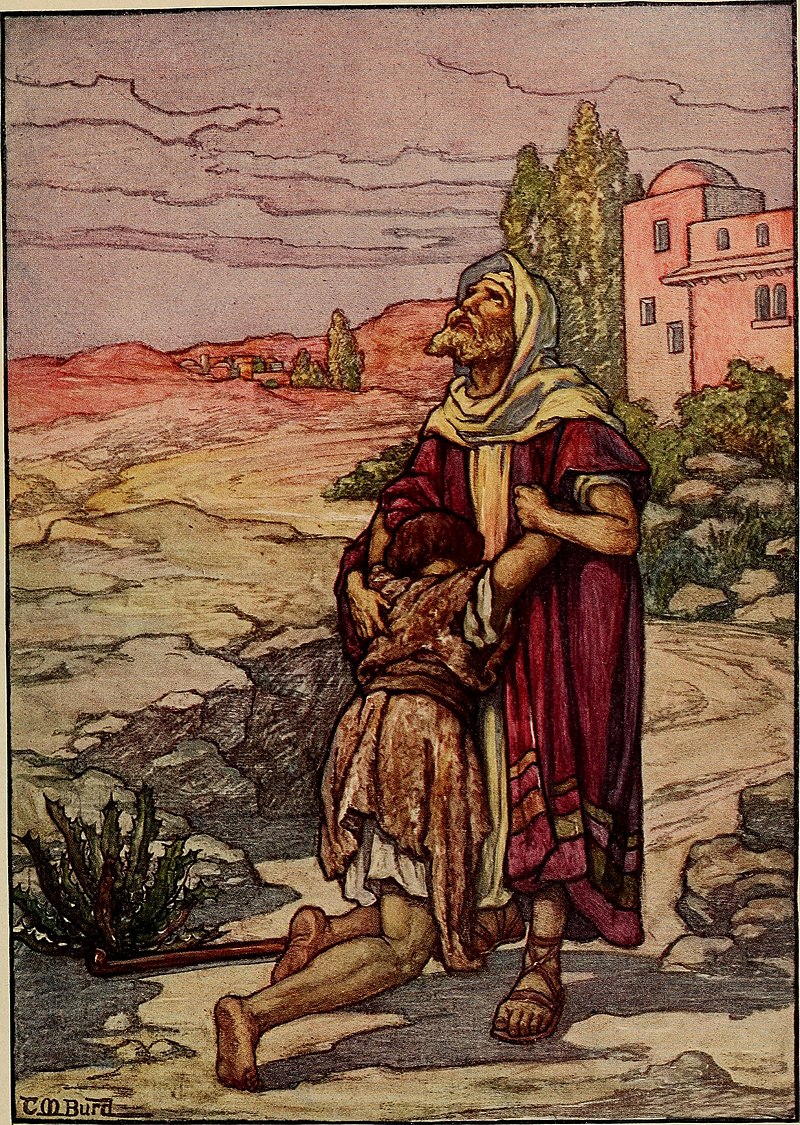
The full article is worth a read, and has a full set of pictures of the windows of the church.
